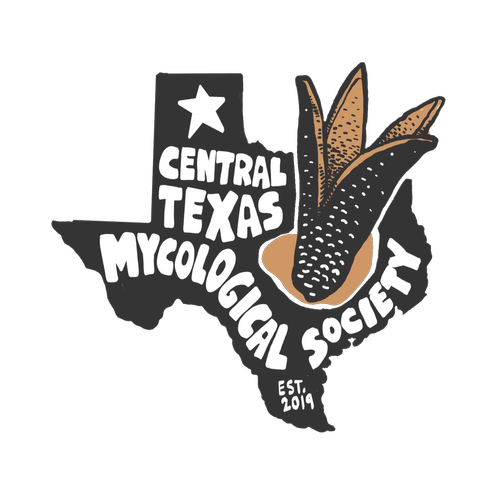As we continue to get rain, keep a look out for Chanterelles, the popular edible mushroom Cantharellus. In Central Texas, they are symbiotic with older Texas Live Oak trees that have a lot of leaf matter, making the ground spongy. Trees near creeks and where water is flowing is very important. Chanterelles need a lot of rain to fruit and they like the torrential Texas-style flash floods. They are orange, yellow or even white, meaty and funnel-shaped and can be found in clusters but most of the time they are found popping up as individual mushrooms as shown in the picture. On the lower surface, underneath the smooth cap, most species have rounded, forked folds that run almost all the way down the stipe, which tapers down seamlessly from the cap. Many species emit a fruity aroma, reminiscent of apricots, and often have a mildly peppery taste. The Jack-o-lantern, Omphalotus illudens is considered the false chanterelle in Texas so be sure to know the morphology and difference. They do sometimes grow around the same time of year but their habitat and morphology is different.
Auricularia or wood ear an edible jelly fungus pops up on downed hardwood limbs a few days after a good rain. Wood ear mushrooms are a popular ingredient in many Chinese dishes such as hot and sour soup, and are also used in Chinese medicine. It is also used in Ghana as a blood tonic. Modern research into possible medical applications has variously concluded that wood ear has anti-tumor, hypoglycemic, anticoagulant and cholesterol-lowering properties.
Favolus, or honeycomb fungus, is a genus of fungi in the family Polyporaceae. The fruit bodies of Favolus species are fleshy with radially arranged pores on the underside of the cap that are angular and deeply pitted, somewhat resembling a honeycomb. I tried a new recipe recently that has the taste and texture of chicharrones or pig's ears. I also discovered a new paper about its edibility. You can read more about it on our blog.
The Lobster mushroom, Hypomyces lactifluorum, contrary to its common name, is not a mushroom, but rather a parasitic ascomycete fungus that grows on certain species of mushrooms, turning them a reddish orange color that resembles the outer shell of a cooked lobster. H. lactifluorum specifically attacks members of the genera Lactarius and Lactifluus (milk-caps), and Russula (brittlegills), such as Russula brevipes and Lactifluus piperatus in North America. At maturity, H. lactifluorum thoroughly covers its host, rendering it unidentifiable. I spotted the Lobster shown in the photo on July 4, 2019 after we had consistent rain. Just yesterday, I spotted fresh Lactarius and Russula mushrooms. And if we continue to get rain, Hypomyces may be parasitizing these mushrooms. Several members of the community including Hi-Fi Myco have already seen them this year!
Lobster mushrooms are widely eaten and enjoyed fresh.They are commercially marketed and sometimes found in grocery stores. They have a seafood-like flavor and a firm, dense texture.
Old-Man-of-the-Woods, Strobilomyces strobilaceusttet is one of North America's most unusual edible wild mushroom. It is a dark, scurfy fungus that is gray-white with tufts of black hair on the cap and a fine layer of dark fur on the mushroom's stem. The species is in the Boletaceae family which means it has pores. They are small; angular; grayish, bruising reddish then black. The stalk is slightly narrower toward the cap usually with one or two ring zones. The partial veil is grayish and sometimes it leaves woolly ring zones on the stalk. It grows on the ground in mixed hardwood forests and on occasion under a conifer. It especially likes oaks.
Not a choice edible but the young fungi have a mellow, earthy flavour. Must be cooked.
As always, if you are trying a new mushroom, confirm the ID with an expert, then try a small amount to make sure you don't have an allergic reaction. Texas Mushroom Identification Facebook group is great for quick responses and ID help. Also, don't forget to add your finds on the Mushrooms of Texas project on iNaturalist.
Follow my foraging adventures @forage.atx.





